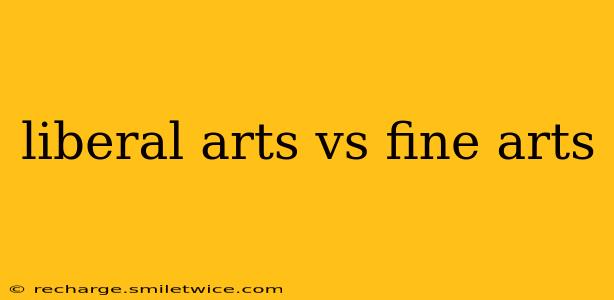Choosing a college major can feel overwhelming, especially when faced with options like Liberal Arts and Fine Arts. While both offer enriching educational experiences, they differ significantly in their focus, career paths, and overall approach to learning. This guide will explore the key distinctions between liberal arts and fine arts, helping you make an informed decision about your academic future.
What is Liberal Arts?
The liberal arts encompass a broad range of academic disciplines designed to cultivate critical thinking, communication, and problem-solving skills. Instead of focusing on a single specialized field, liberal arts programs emphasize a well-rounded education, exposing students to humanities, social sciences, and natural sciences. Common majors include history, literature, philosophy, political science, and sociology.
The core principle of liberal arts education is to develop well-rounded individuals capable of adapting to a constantly evolving world. The curriculum often includes courses in writing, research, and public speaking, equipping graduates with essential skills for various professions.
What is Fine Arts?
Fine arts focuses on the creation and study of art forms such as painting, sculpture, music, theatre, and dance. Unlike liberal arts, which offer a broader perspective, fine arts programs delve deeply into the techniques, history, and theory of a specific art form. Students develop specialized skills through hands-on practice and theoretical study, preparing them for careers in the creative industries.
Key Differences: Liberal Arts vs. Fine Arts
Here's a table summarizing the key differences:
| Feature | Liberal Arts | Fine Arts |
|---|---|---|
| Focus | Broad range of disciplines; critical thinking | Specific art form; creative skill development |
| Curriculum | Humanities, social sciences, natural sciences | Studio practice, art history, theory |
| Career Paths | Diverse; adaptable to various professions | Primarily within creative industries |
| Skill Emphasis | Critical thinking, communication, problem-solving | Artistic skill, creativity, technical expertise |
| Assessment | Essays, exams, research papers | Performances, exhibitions, portfolio reviews |
What are the career paths for liberal arts graduates?
H2: What are the career paths for liberal arts graduates?
Liberal arts graduates are equipped with a versatile skillset highly valued by employers. Their ability to think critically, communicate effectively, and solve problems makes them adaptable to various roles. Career paths can range from journalism and law to education, business, and non-profit organizations. Many pursue further education in specialized fields, leveraging their strong foundation in critical thinking and research.
What are the career paths for fine arts graduates?
H2: What are the career paths for fine arts graduates?
Fine arts graduates typically pursue careers within the creative industries. These can include roles as artists, designers, musicians, actors, and curators. Many freelance, while others find employment in galleries, museums, design firms, or entertainment companies. The competitiveness of these fields requires dedication, talent, and often, further training or networking.
Which major is better for me? Liberal Arts or Fine Arts?
H2: Which major is better for me? Liberal Arts or Fine Arts?
The "better" major depends entirely on your individual interests, skills, and career aspirations. If you enjoy exploring diverse subjects and developing a broad skillset, liberal arts might be a better fit. If you possess a strong passion for a particular art form and are dedicated to developing your creative skills, fine arts could be the right path. Consider your strengths, passions, and long-term goals when making this important decision. Self-reflection and potentially career counseling can be immensely beneficial.
Is a liberal arts degree useful?
H3: Is a liberal arts degree useful?
Absolutely! While the immediate post-graduation employment landscape might seem less directly tied to specific professions compared to some technical fields, a liberal arts degree provides a powerful foundation for lifelong learning and adaptability. The critical thinking, communication, and problem-solving skills honed through a liberal arts education are highly valued across diverse industries.
Is a fine arts degree worth it?
H3: Is a fine arts degree worth it?
The value of a fine arts degree is subjective and depends on individual goals and the commitment to building a career in a competitive field. While financial stability might not be guaranteed, a fine arts degree provides invaluable training, creative expression, and the opportunity to pursue a passion. It's crucial to be realistic about the challenges and rewards of a fine arts career and to develop a robust portfolio and network.
Choosing between a liberal arts and a fine arts education is a personal journey. By carefully considering your strengths, interests, and long-term career goals, you can confidently select the path that best aligns with your aspirations. Remember that both offer valuable skills and knowledge, ultimately contributing to personal growth and professional success.
